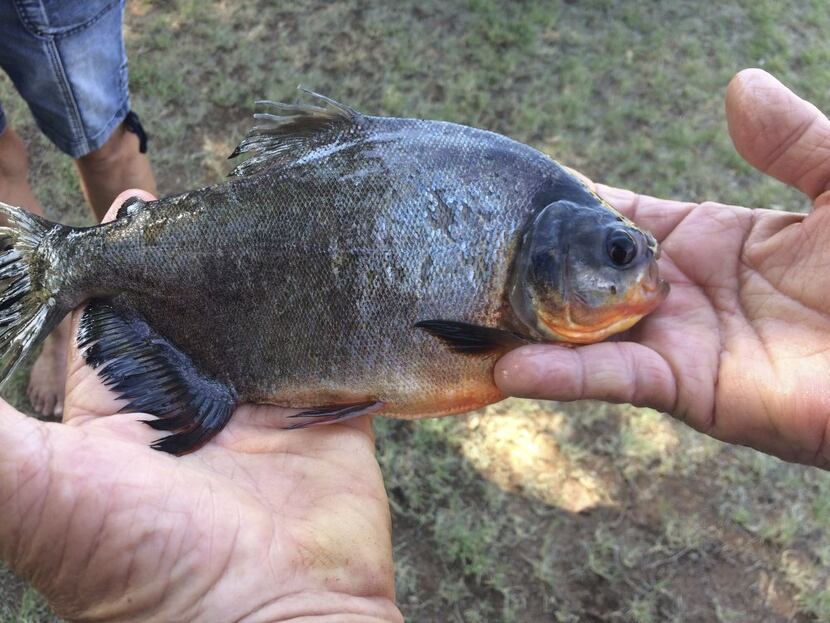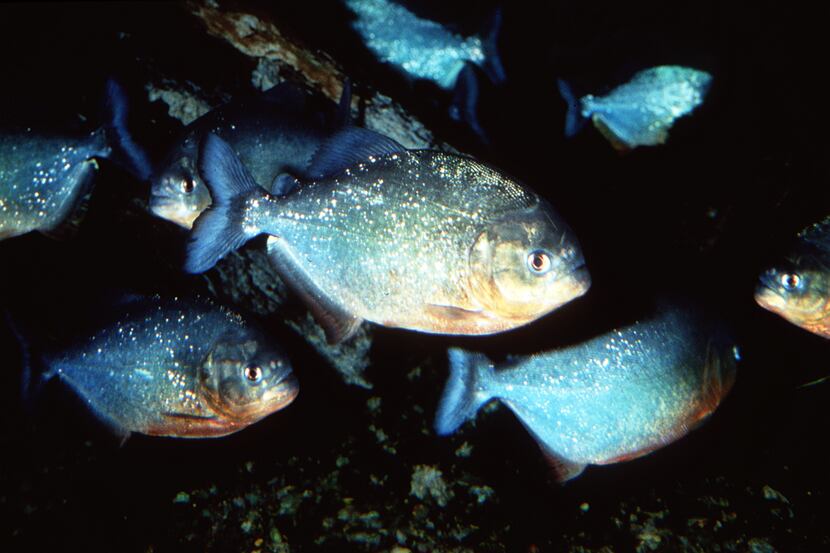Rumor has it that there are piranhas lurking in Lavon Lake and other North Texas waters.
Is this chatter in a Princeton community Facebook group fact or fiction? The Dallas Morning News went fishing for answers.
Piranhas fall into the myth more than reality category. According to experts, there is not an established population of piranhas in Lavon Lake. In fact, the United States Geological Survey only shows two documented piranha sightings in Texas with one taking place near Houston and the other near San Antonio.
So how did the piranhas get there? Irresponsible pet owners likely dumped their aquarium in public waters, according to Monica McGarrity, senior scientist for Aquatic Invasive Species at Texas Parks and Wildlife Department.
Even if they were introduced, it’s unlikely that piranhas could form an established population in a North Texas lake in the future, she said. Aquarium dumpers usually only dispose of one fish, which needs a counterpart with which to mate.
“These are tropical fish and so temperatures may get too cold and they may not survive the winter,” she added.
But if piranhas have never been documented in North Texas, what did residents see in Lavon Lake?
Park ranger Stephen Perrin of the U.S. Army Corps of Engineers said it was likely a pacu — a relative of the piranha.
Like piranhas, pacus are originally from the Amazon river basin in South America and the two fish look similar when they are young.
When the fish age, they can look quite different. Some subspecies of pacu can live for around two decades and weigh more than 60 pounds upon reaching maturity, according to the Smithsonian National Zoo and Biological Institute.
The folklore about the scary, razor-toothed piranha doesn’t accurately describe a pacu. Pacus have duller teeth that resemble those of humans more than piranhas.

There have been 27 reports of pacu sightings in Texas since the 1980s, according to the USGS database. Similar to piranhas, these pacus were likely dumped into the lake by former pet fish owners, Perrin said.
Pacus have been sighted and documented a few times in North Texas waters: Lavon Lake in 1987, Lake Texoma in Grayson County in 2003, Eagle Mountain Lake near Fort Worth in 2000 and Ray Perry Lake in Tarrant County in 2007, according to USGS data.
These sightings are infrequent and don’t indicate a widespread threat to human or environmental health at this time, McGarrity said. Perrin said he’s only seen one in his ten years with the corps.
Pacus generally do not harm people, McGarrity said, but swimmers and boaters who encounter the fish should still be cautious.
“They can deliver a nasty bite. … Handling those fish could pose something of a risk to humans,” she said.
But if you see a pacu, or piranha, make sure to report it because if it was able to establish itself in Texas it could become the state’s next invasive species, according to Texasinvasives.org, a partnership between state and federal agencies, conservation organizations, academia and other private and public stakeholders who work to protect Texas from invasive species.

